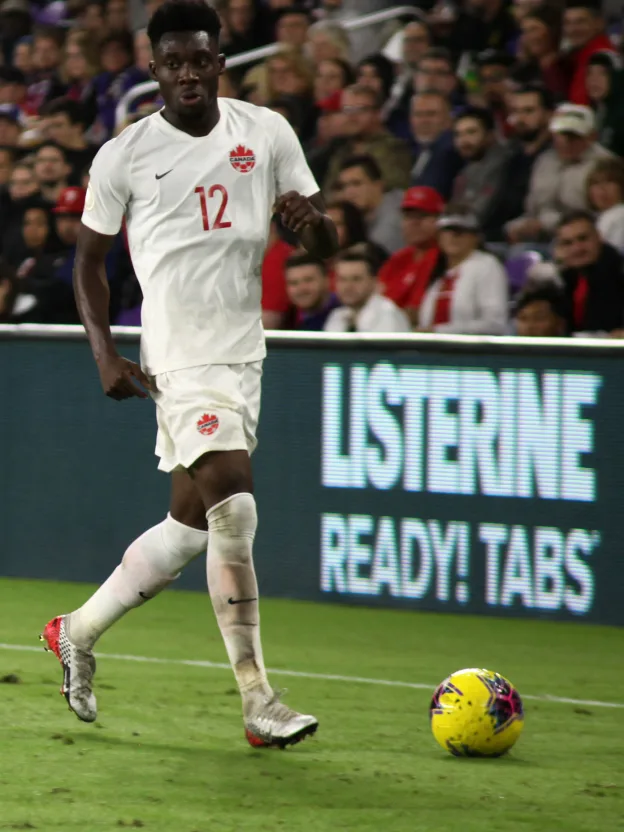“Hope is a good thing, maybe the best of things, and no good thing ever dies.” — Stephen King It’s amazing how quickly things can change in such a short period of time when it comes to the perceived state of the Canadian men’s team. Optimism was at an all-time high following Canada’s 2-0 victory over the United States in Concacaf Nations League play last month in Toronto. The win was Canada’s first against the U.S. in 34 years, putting it firmly in charge of Group A and on the verge of qualifying for next summer’s Nations League finals. It also bolstered the Reds’ chances of making it to “the Hex” in World Cup qualifying for the first time since 1997. Canadian coach John Herdman heralded his players for their Herculean efforts, suggesting this was also a preview of what to expect from his side. “It’s only one step. It’s only one little drop in the ocean of what I’m hoping for this team. There’s more to come,” an emotional Herdman promised to reporters in the post-game press conference.
RELATED READING: Canada embarrassed by U.S. in Concacaf Nations League
Indeed, the prevailing feeling was this historic win was a major statement by Canada, providing hope to legions of long-suffering soccer supporters that the future was bright after plenty of dark days in the form of countless false dawns and one failed World Cup qualifying campaign after another. There was genuine belief the Canadian team appeared to be turning a corner, and that it could hang with the big boys and compete against the elite nations in the Concacaf region on a regular basis. But a lot of the optimism surrounding this Canadian team washed away on a rainy evening in Orlando last Friday when Herdman’s side suffered a humbling 4-1 defeat to the U.S. Where the Canadians once controlled their fate, they must now rely on Cuba upsetting the U.S. this week (a miracle that would be on par with the loaves and fishes) in order to qualify for next summer’s Nations League finals. And with that, hope has given way to the cold, hard reality. All of which raises the obvious question: Where exactly is this Canadian men’s team in the grand scheme of things? Hope is a good thing, and Canadian players, coaches and fans had every right to celebrate the win over the U.S. Victories such as that one have been few and far between for the Canadian program over the years, so when moments like that come along they should be celebrated. But some perspective is also required here. Ascribing so much meaning to one positive result was a fool’s errand, and the belief that Canada could hold its own on a regular basis against the top teams in Concacaf proved incredibly premature. There’s no question that Canada’s national team has undergone a major shift since Herdman took over the coaching reins last year. He’s expanded the player pool, given the team a clear tactical identity, and, most of important of all, changed the culture within the side by instilling his players with a sense of belief. For the first time in a very long time, Canada boasts a legitimately dynamic attack that gives opponents something to fear, led by youngsters the calibre of Alphonso Davies and Jonathan David. Whereas the Reds used to routinely rely on players from “Unattached FC,” many Canadians are now playing regular first team soccer at top MLS clubs and European sides, including goalkeeper Milan Borjan, who is a key figure for Red Star Belgrade in its domestic and UEFA Champions League campaigns. The midfield is strong and varied, with Samuel Piette, Jonathan Osario and Scott Arfield leading the way, as veteran Atiba Hutchinson, once Canada’s key linchpin, becomes less and less important to the Canadian cause. But this is still a largely unbalanced Canadian side lacking depth and quality in defence, especially at the fullback positions. Contrary to what Herdman proclaimed after the loss to the U.S., Davies is not “the best left-back in Canada, without a doubt.” The teenager’s disastrous outing against the Americans in Orlando was his worst performance in a national team uniform, and the decision to play him there was all the more puzzling when you consider Sam Adekugbe, a natural left back who plays regularly for Norwegian club Valerenga, was languishing on the bench.
RELATED READING: Where does CanMNT go from here?
What is this version of Canada’s best central defensive duo? Is it Steven Vitoria and Doneil Henry? Henry and Derek Cornelius? Cornelius and Vitoria? And what of David Edgar or Mason Trafford? Dominick Zator or Amer Didic? The defensive spine of this team remains suspect, and it’s an area of the field that opponents can exploit, as the U.S. so expertly did in Orlando last week. And as great as the win was against the Americans, it was an outlier in terms of recent Canadian results, an example of the Reds punching above their weight class. Since taking over as coach in 2018, Herdman has led Canada to 10 wins in 13 matches. But the overwhelming majority of those victories came against nations it should beat: The U.S. Virgin Islands, Cuba, Saint Kitts and Nevis, Dominica, Martinique and French Guiana. Canada’s record against more established Concacaf sides makes for far less impressive reading, with losses to the U.S., Mexico and Haiti in four encounters. The defeat to Haiti, in the quarter-finals of the Gold Cup, was especially telling, as Canada threw away a two-goal lead in what was the team’s biggest knockout game of the last few years. Beating minnows is one thing, as is racking up wins in friendlies and Nations League qualifiers on home soil. Beating the top teams in Concacaf and going down to Central America to earn results in World Cup qualifiers is quite another. Canada isn’t at that point yet. For all the positives achieved under Herdman, this Canadian team remains a work in progress. It is improving, but it isn’t ready for prime time just yet.

